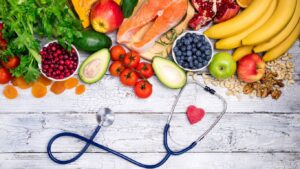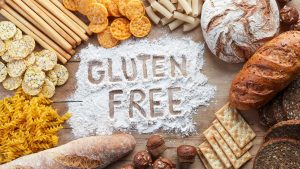When you go into a supermarket and are faced with so many options in front of you it can be overwhelming deciding what to buy. At this point it can seem too difficult to check the labels to find the most nutritious choice.
However being a more critical shopper is important to make sure you and your family enjoy the most nourishing food. To make food shopping and your life a little easier I have created this label-reading guide to help you make healthier choices at the supermarket.
Step 1: Check Front of Pack Claims
Food manufacturers often like to use clever wording such as ‘low in sugar’, ‘low in salt’ and ‘97% fat free’ but there are lots of rules that have to be followed in regards to those nutrition claims. For example, a ‘low sugar’ food must have no more than 5g of sugar per 100g. A food claiming to be low in salt must have no more than 120mg of sodium per 100g. And a food product which is deemed to be ‘97% fat free’ must have a maximum of 3% fat. You can verify these claims by reading the nutrition information panel on the product.
Step 2: Look at the Ingredients List
Ingredients in food products are listed in descending order by weight, from the largest down to the smallest. If a food item lists some form of sugar, fat or flour as it’s first three ingredients, the food is unlikely to be healthy, as seen with pastry products, biscuits and snack foods. These ingredients can also appear under other names (as seen below).
If an ingredient is listed on the front of the packaging or is part of the brand name of that particular product, the percentage of that ingredient contained in the product will be found in the ingredients list. For instance you will see some brands of fruit juice/drink will have as little as 5% actual fruit and have sugar listed higher in the ingredients list. The most important thing to remember is that the fewer ingredients that a food product has, the healthier and most natural it’s likely to be.

| SALT IN DISGUISE |
| Kosher salt Vegetable salt Sea salt Sodium bicarbonate Monosodium glutamate (MSG) Stock Soy sauce |
Step 3: Compare Nutrition Panels
At the top of every panel, you will find the serving size, which has been set by each individual manufacturer. This must be clearly defined ( such as 30g or 1/2 a cup) along with the number of servings contained within the food product.
The ‘per serve’ column comes in handy when it comes to estimating how much of that food product you should eat. You can quickly and easily see how much sugar, fat, fibre, sodium or kilojoules (calories) you would get from one serving. This may affect how much of a serving you choose to consume.
The ‘per 100g’ column which is found next to the ‘per serving’ column is the column you really want to focus on. That’s because serving sizes can widely vary between brands of the same product. However the 100g benchmark doesn’t change. This comes in handy when comparing similar products. For instance, which brand of cereal has the least sugar and the most fibre or which brand of stock has the least sodium?

| Easy health guidelines to aim for: Less than 15g sugar per 100gLess than 10g fat per 100gLess than 120mg per 100g (difficult to find products with such low sodium so anything up to 400mg per 100g is ok) |



